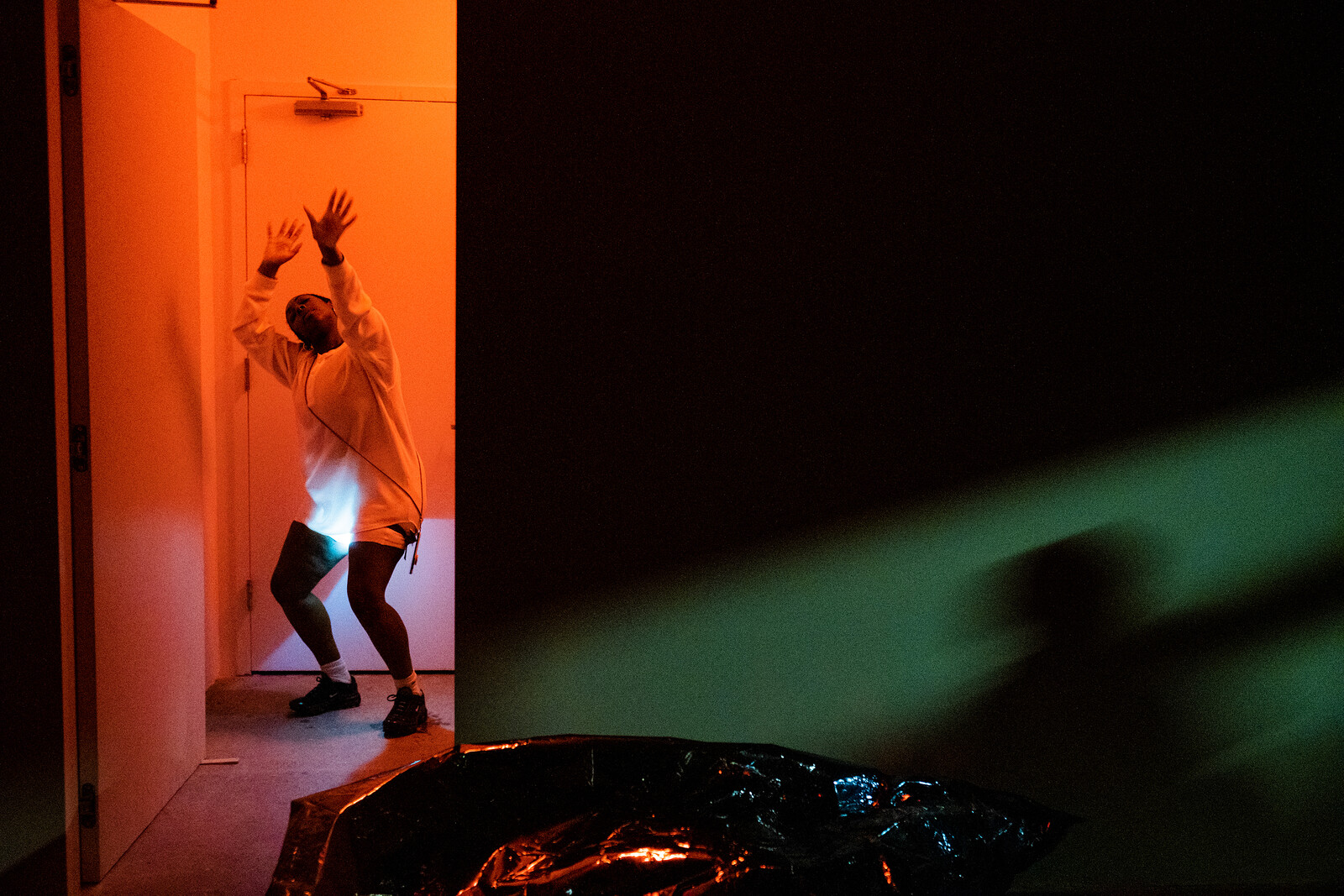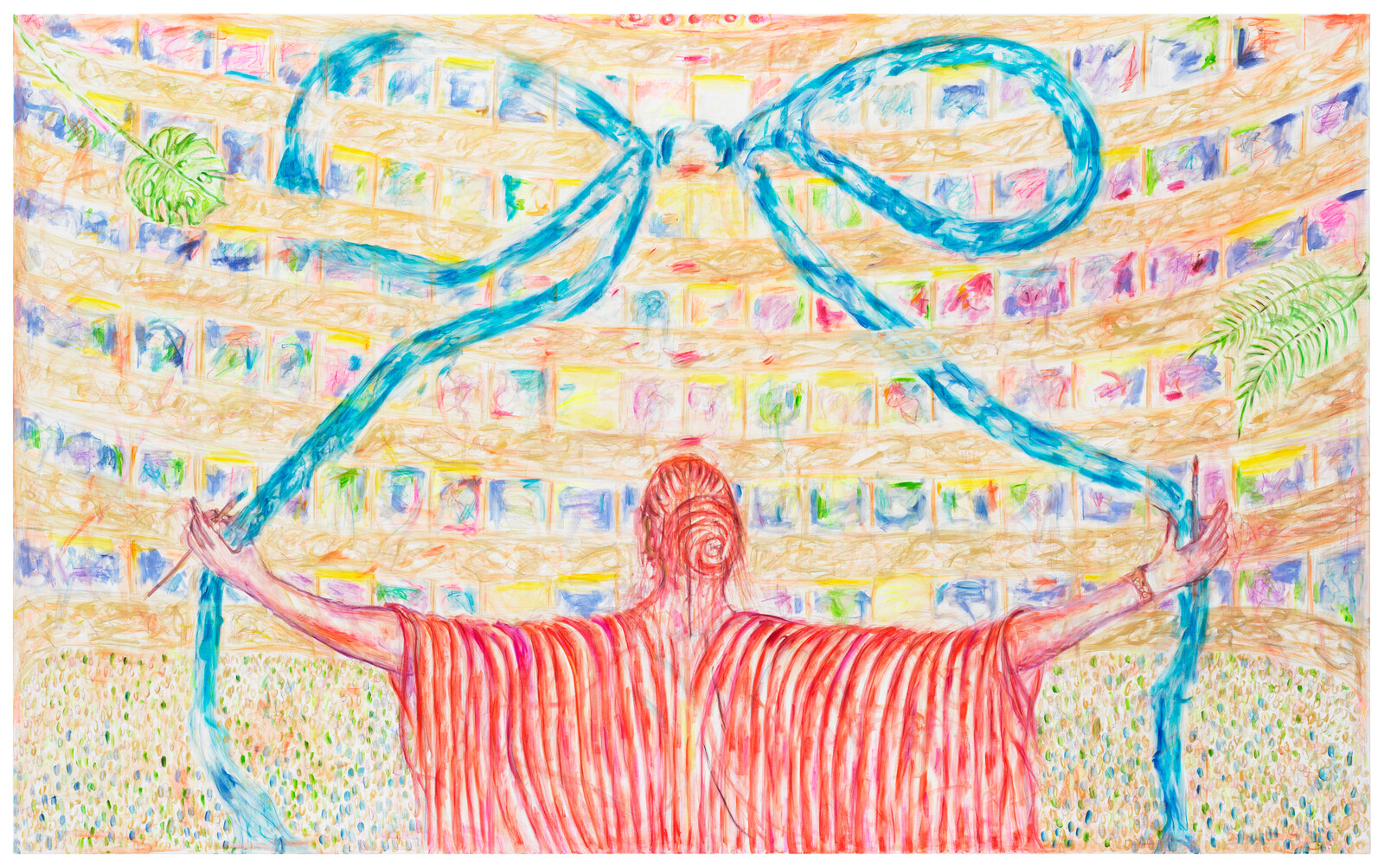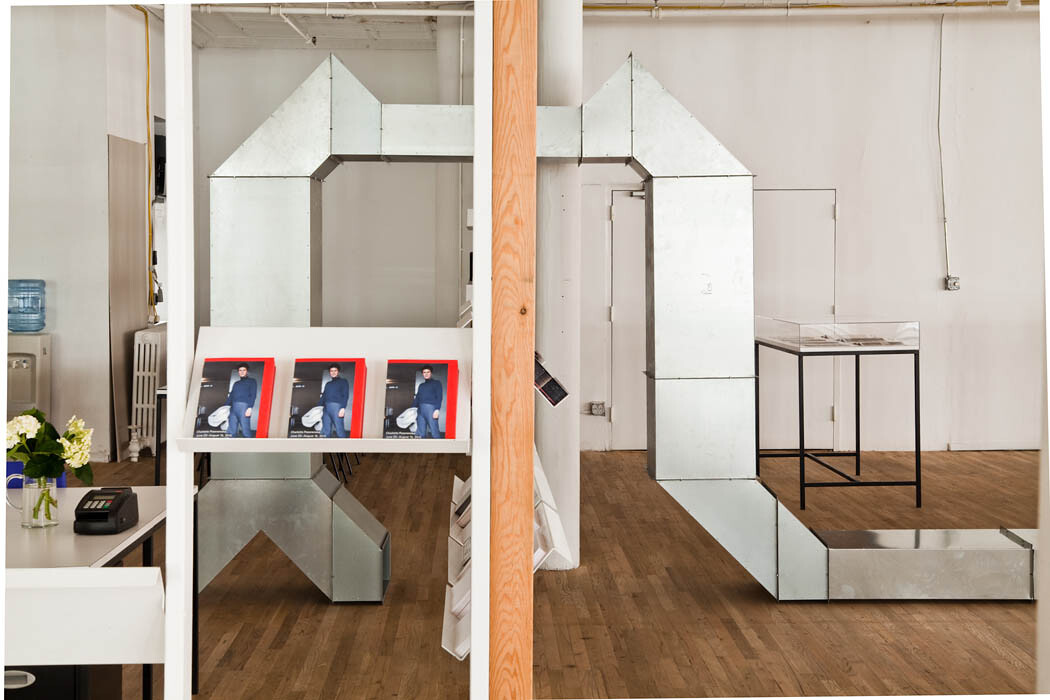Categories
Subjects
Authors
Artists
Venues
Locations
Calendar
Filter
Done
January 12, 2023 – Review
keyon gaskin with Zinzi Minott and Moya Michael
Rachel Valinsky

keyon gaskin, Zinzi Minott, and Moya Michael weren’t just stalling. Barely visible beneath their semi-opaque hooded cloaks, and positioned at various points around the entrance to Artists Space, they outlined the terms of their performance clearly: “Once we get moving feel free to roam around the space. We will be all over the place … We might get close to you … Keep your hands to yourself … Be mindful, be careful … We’re at work.” We “waited” for things to start—though, of course, they already had.
gaskin—an artist living in Portland, Oregon who performs both solo and in movement-based groups—has frequently made active audience engagement a feature of their pieces, eschewing passive consumption of black and queer performance by primarily white audiences. At the first performance commission held across Artists Space’s 8,000 square feet, audience-performer interactions were diffuse in part because of the building’s size—the performance took place over several rooms, and not all of it could be witnessed simultaneously. Visibility, its trappings and attendant politics, were not so much withheld as decentered. “We can’t see everything,” gaskin and their collaborators cautioned at the start, implying that neither should we. “Remember, this is a performance, but not your performance. …
April 7, 2020 – Review
Jutta Koether’s “4 the Team” / Jana Euler’s “Unform”
Wendy Vogel

Days before New York’s galleries shuttered in mid-March, I saw exhibitions of figurative paintings by Jutta Koether and Jana Euler that read to me like biological weapons threatening the patriarchal history of art. Worried that I may have become an invisible conduit for viral contagion, my heightened bodily self-consciousness found echoes, first, in Koether’s exhibition “4 the Team,” the German-born painter and musician’s first solo show at Lévy Gorvy. For this mini-survey of the artist’s works on canvas from the 1980s to the present, Koether variously adopts vulnerability and heroism as painterly moods. Her practice—born out of the discourses of appropriation, feminism, and institutional critique—often hinges on the theatrics of installation: stage lighting, transparent glass walls, and performance. Here, she chose to leave the gallery’s elegant three-story space free of spatial interventions, allowing for an associative reading of the paintings.
The ground floor debuted a suite of triumphant new works—three large figurative canvases, and two smaller abstract pieces titled Vorhang [Curtains] in her signature palette of reds and pinks. At first glance the portraits Neue Frau [New Woman], Neuer Mann [New Man], and Encore, all from 2019 with a color scheme of contrasting pastels, appear optimistic about the state …
September 17, 2010 – Review
Charlotte Posenenske at Artists Space, New York
Adam Kleinman

Everywhere you look these days there seems to be some exhibition, text, or reference to the work of German artist Charlotte Posenenske (1930-1985). And often enough, these presentations focus on a central paradox; that the artist decidedly ended her career circa 1968-9—by ceasing to make new work, while also preventing the extant work to circulate—and started a career in sociology thereafter. Adding fuel to the fire of this apparent “disavowal” of her artistic practice, Posenenske’s work seems to prefigure many current debates around art’s social relevance. In particular, the late “ducts” or “tube” series—comprised of modular and variable ventilation-like parts meant to be reconfigured through the decisions of others—are not dissimilar to the “relational turn” toward volition and open-endedness as a means to foster new forms of sociability. Complicating matters, Posenenske’s self-exile was coupled by her written condemnation of the instrumental use of public art and its worth in her reasons for turning down a commission in a new housing development—curious as Posenenske herself placed artworks outside to promote incidental encounters. Here, a second mirror, one reflecting the arguments of many relational art detractors, i.e., that artworks create simulations of social exchange and are allegorical at best, seems to be …
